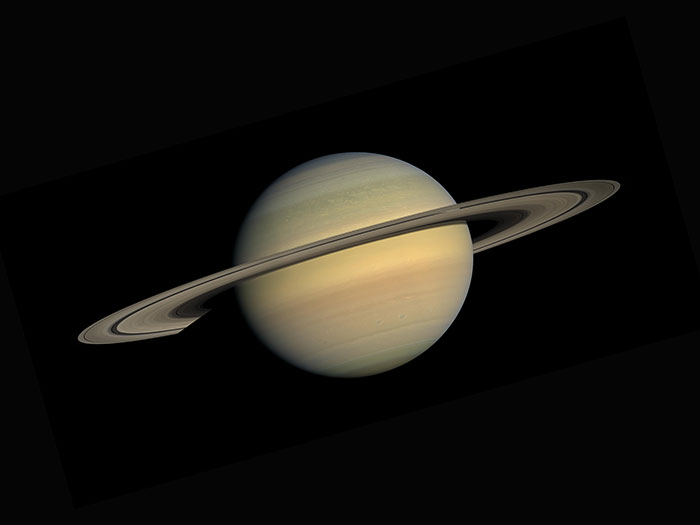Physics - it’s all around us, everywhere, so it’s no wonder why fun facts on physics vary in their intensity. These facts touch upon the surface tension of the gelatin we eat and literal black holes that can swallow everything in their sight, Earth included. Some physics facts are scary enough to make you fear the upcoming and unavoidable future, while others might make you giggle and think, “Well, this is neat.” However, with so many facts dotting the internet, we might not all be able to answer the simple question — what is physics?
Well, it’s not rocket science for the most part. It is a subject of science that talks about our universe. It is the universal language understood on Earth, the Moon, and the space between the two. But the subject itself can be divided into more parts. This is why facts of physics have such a large variety. From rockets, planets, and the bikes we use, everything gets explained with the help of physics. It is the thing that helps us organize the universe in a more understandable way. It helps us understand everything that is going on in the universe by using universal formulas and constants. Plenty of physics fun facts seem relatable and interesting to read because they touch upon the things we experience every day.
Since it is a subject that has been researched and published for several hundred years, there are plenty of physics fun facts that you can read up on and learn from. We have compiled the best ones in the list below. With so many facts given, upvote the ones that change your view of the world. On the other hand, if you have some cool physics facts to share, do so in the comments below.
This post may include affiliate links.
 The higher you are (building-wise), the faster time will go.
The higher you are (building-wise), the faster time will go.
Time is a hard concept to understand when you look at it through the lens of physics. A couple of seconds while standing on the ground will go slower than for someone who sits on a high building, like the Empire State building. It is best explained by Einstein and his famous theory of relativity.
The further away you are from the force of gravity, the faster time will pass for you and vice versa. This is why matter appears frozen in time right before falling into the event horizon of a black hole
 The screens of smartphones work thanks to the electric charges leaving our fingers.
The screens of smartphones work thanks to the electric charges leaving our fingers.
Touch phones work thanks to the physics behind the human body itself. When we touch the screens with our fingers, we let out a small number of electric charges that register with the mechanics and allow us to interact. For this reason, things like rubber, fingernails, and others don’t register.
Hydrogen is the most abundant element in the whole universe.
The water we drink, the sun that shines its rays onto us, and even human beings have hydrogen inside. Hydrogen is everywhere and is one of the essential elements in the whole universe. It is estimated that the Milky Way, our galaxy, is composed of around 74% of hydrogen atoms.
Hydrogen is the oldest element in the universe and it was formed as soon as the universe cooled down enough for the particles to interact with each other
 It’s nearly impossible to sink in the Dead Sea.
It’s nearly impossible to sink in the Dead Sea.
The Dead Sea is popular for the number of tourists that visit it, but also for having a large amount of salt in it. Salt is not only good for food, but also a good way of making the water much denser. There is so much of it in that sea that people who swim there have little to no chance of drowning. Of course, it is still important to keep things safe.
Does that mean it'd be easier to drown in a lake than an ocean?
Wind casts an invisible shadow.
Shadows are not always cast by objects, and winds can do it too. The only problem? We can’t see them with the naked eye. Wind, a movement of a gas that varies from a small gust to full-on thunderstorms, can cast a small shadow only visible with the help of machines and physics.
 Light gets much slower in water.
Light gets much slower in water.
Water is not only a refresher at the end of the day, but also a great stopper for the wavelengths of light. Light travels through air at a very high speed, and that is thanks to its small density. Water, however, is thicker. Since every molecule has surface tension, light gets distorted due to the amount of energy needed to pass through.
It's about 75% of it's speed in a vacuum. This slow down is true of any media. In glass it is about 66% and in diamond about 40% (the slowest speed in any natural material found on Earth). Not sure what water surface tension or required energy has to do with anything about this phenomenon. The change in speed (and thus the refraction angle) is also dependent on the wavelength of light, hence why a prism disperses light (and why natural diamond is much more "sparkly" than glass).
 Galileo Galilei proved his theory of free fall with the help of the leaning tower of Pisa.
Galileo Galilei proved his theory of free fall with the help of the leaning tower of Pisa.
While Galileo Galilei might have created the theory of free fall, he had to prove it by experimenting. He did it by throwing two cannonballs of the same material, but different masses, from the leaning tower of Pisa. His theory would be further supported by missions to the moon.
All those people in that photo and yet none of them are trying to hold the tower up
 The universe is growing every second.
The universe is growing every second.
The universe is already a vast space full of planets, stars, and other celestial bodies. But it is still not big enough. The universe is growing at a high rate every second, expanding in every direction, getting colder and faster at the same time. This expansion has been going on for billions of years.
If the universe continues expanding, it will result in a heat death where all the particles slowly cool down and decay over several trillions of trillions of years. If it starts accelerating the expansion too much, the fabric of space time will tear causing a Big Ri. If it starts contracting then it will result in a Big Crunch. There’s also the option of Vacuum Decay
 Water can boil and freeze at the same time.
Water can boil and freeze at the same time.
At the same temperature, water can either boil or freeze. A triple point is a point where the temperature, pressure, and pressure value all coincide. The fact that all three states—liquid, ice, and water vapor—are present at this time allows water to boil and freeze at the same temperature.
Hard steel tends to be more elastic than rubber.
The capacity of a substance to assume its original form upon the application of an external force is known as its elastic property. For this reason, steel is seen as a more elastic material than rubber. Since steel can return to its original form faster, it is commonly used as a building material in bridges.
Anyone who's played with an original Super Ball can tell you that. Bounce them hard enough and often enough and they'll throw off chunks.
 The myth of an apple falling on Newton is wrong.
The myth of an apple falling on Newton is wrong.
We’ve all heard the story of an apple falling on Isaac Newton's head, but few know it was a myth. In reality, Newton drew inspiration from apples, not because one hit his head, but because they fell straight down and not sideways. This observation helped him develop the theory of universal gravity.
 Heat gets generated from sound waves.
Heat gets generated from sound waves.
While we might associate heat with burning fires and hot water, sound can also generate a small amount of heat. When a sound wave gets emitted, it travels through the air till it hits an object. Once it hits something, it gets absorbed into it, and in return, a small amount of heat gets produced.
The launch of the Saturn V spacecraft was so loud that they had to dump gallons of water at the launch pad to reduce the sound levels
 Saturn might float on water as ice does.
Saturn might float on water as ice does.
Saturn is one of the biggest planets that is full of gasses. Saturn has a small density, less than water, which has a larger one. When an object of a smaller density falls into a thick liquid, it should float, according to theory. So, if we were to place Saturn in water, it should float in it like ice does.
 Seatbelts work thanks to inertia.
Seatbelts work thanks to inertia.
Accidents happen, and it’s important to prepare for them in the best possible way. Seatbelts in our cars protect us from serious injuries during an accident with the help of physics. When a vehicle comes to an instant stop, inertia kicks in by keeping our lower body on the seat while the top, thanks to the seat belt, moves forwards, distributing the energy.
Seat belts use a centrifugal clutch cylinder that throws out arms to lock it in place when it rotates quickly, therefore preventing the body from moving forward. This can actually be more dangerous as the body's internal organs will continue traveling at the original rate of speed due to inertia and could rip themselves apart because the body is not also moving forward.
Space is not entirely a vacuum.
While the darkness of it might hint that it is empty, that's not the truth, but actually, there is something there. About three atoms are present in every cubic meter of space. Sadly, it is so small that it doesn’t make a difference. A cubic meter of air contains roughly 2.5 x 1025 molecules at sea level.
It’s impossible to make a perpetual motion machine run indefinitely.
According to Newton's first law, unless another force is acting on an item, it could continue to travel at the same speed forever. Thus, if an object gets pushed, it should move indefinitely. Sadly, we live in a world of multiple forces. When an object moves, air resistance and other forces work against it, thus making an indefinitely running machine impossible.
 A bike stays balanced thanks to the gyroscopic effect.
A bike stays balanced thanks to the gyroscopic effect.
Bikes get ridden everywhere, yet few know how they can keep their balance for a long time. After all, two wheels connected by metal don’t always equal stability. We can thank the gyroscopic effect for it. It explains the tendency of objects to maintain the same direction when an external force affects them.
 All of humanity could fit in a sugar cube.
All of humanity could fit in a sugar cube.
When we look at a person like a walking pile of atoms, there is a lot of free space to work with. We are so empty (atom-wise) that if we were to remove all of the free space from all of the humans, we could fit in a single sugar club. However, its weight would be massive, around 5 billion tons.
 The color of the sun doesn’t change during the sunset.
The color of the sun doesn’t change during the sunset.
The sunset is a beautiful sight, yet we contribute the yellowish-red color to the sun when in reality, it doesn’t change. The sun emits wavelengths every second, and they change color. When they hit the atmosphere at a certain angle, we tend to see a change of colors, and during that period, the sun seems to emit another color.
The sun mostly gives out light in all wavelengths but the most given out wavelength is green
Bodies of people who passed away float in water due to gas.
The reason why bodies float in water is a sad one. When lungs fill up with water, bodies sink to the bottom. However, when the person passes away, gasses are released that cause the body to rise and float. Because the density of the body changes, it becomes light enough to lift to the surface.
A body would only float if the gasses are NOT released. Bacteria generates the gasses as they rot the body.
 You might age at a slower rate if you travel at light speed.
You might age at a slower rate if you travel at light speed.
The best way to beat the unavoidable is to travel as fast as possible. Light speed has been a subject of many physicists to reach since it would allow us to travel through the universe quickly, but also due to its benefits to the world of science. It is believed that if we were to travel at light speed, we might age at a slower rate than we do at the current speed, which is zero.
It’s impossible to travel at light speed because only massless particles can do so. The closer you get to light speed the more energy you’ll have to put in to get faster
 It is possible to see sound.
It is possible to see sound.
When we play the guitar or push some buttons on a piano, we emit sound waves. We know they are there because we hear it, but we can’t see it… or can we? Vibrations, part of the classic mechanic's branch of physics, can be musical instruments. When the water in a cup moves in a fun way — you can thank vibrations for that.
Even people with synesthesia can see sound . I usually see a black or blue space in which all these colours and waves move around and dance together
Leucippus was one of the first people to reject religious explanations for natural occurrences.
In the good old days, religion was used to explain everything happening in the world, even natural occurrences like thunderstorms and earthquakes. Leucippus rejected this idea, instead insisting that the events were happening due to nature itself. He is credited as the first philosopher to embrace atomism.
Particles tend to act differently when we observe them.
When we look at particles from the lens of quantum physics, they get pretty weird. For example, electrons act like spread-out waves. This characteristic causes them to seem differently as a wave when we are not looking at them compared to when we are looking at them. Scientists like to call this phenomenon duality.
It is this theory that scientists are exploring possibilities of teleportation in the future
 You would weigh less on the Moon.
You would weigh less on the Moon.
The weight scale is one of the scariest things in the world as it shows how much we weigh. It can cause a feeling of anxiety in some people. However, it works thanks to gravity and shows how much we weigh on Earth. If we were to go to the Moon, our weight would be much more different because the gravitational force there is weaker than on Earth.
I've always wanted to know what it feels like to jump around on the moon
 It is possible to make diamonds at home.
It is possible to make diamonds at home.
Diamonds are the keys to any heart. We dig them up from the ground and stick them into necklaces, rings, and other accessories. Yet very few know it is possible to make them without digging them up. If you apply enough pressure and heat, graphite gets transformed into diamonds. However, the process is very expensive.
That's how synthetic diamonds are made. But making them "at home" is a bit of a stretch (you won't have much luck trying to use a sandwich press to make them)
 Inertia is what makes roller coasters fun.
Inertia is what makes roller coasters fun.
It’s all fun and giggles on the roller coaster ride before inertia disappears, and all you are left to do is hang in a bubble of fear. Thankfully, that doesn’t happen because inertia keeps us in place. Inertia, a force that keeps an object in motion in one direction, is seen everywhere, especially on roller coasters.
Physics' meaning comes from the Greeks.
The Greeks did a lot for the world we know. They created the idea of democracy, philosophy flourished with people like Socrates and Diogenes, and they also created the name of physics we use every day. Greeks have been studying nature, and this is why physics is constructed based on the word physikḗ, a.k.a, knowledge of nature.
Black holes can stop time.
Black holes are already scary things when we think about the gravitational force they possess, but when you add the fact that time itself seems to freeze in them — now they are horrifying. Because of their massive gravitational pull, even a second would feel never-ending. It is due to space and time shifting roles.
They can’t exactly stop time but they can warp it and the closer you go to the event horizon, the slower you will appear to be moving according to an observer. Right before falling in you will appear to freeze and grow redder and redder and slowly fade away
 Sound waves could heat up a cold soup.
Sound waves could heat up a cold soup.
Sound and soup are two things we might not think could mix, but if one tries hard enough, a soup can be heated up using sound waves. However, since sound carries a small amount of heat, it will take some time before your cold bean soup will heat up enough for you to eat.
 The Heliocentrism mathematical module was created in 1514 by Nicolaus Copernicus.
The Heliocentrism mathematical module was created in 1514 by Nicolaus Copernicus.
Many people in the old times believed that Earth, the celestial body we live in, was the center of the universe and that the sun revolved around it. It is far from the truth. While some philosophers and scientists stated that Earth, not the sun, was turning, Nicolaus Copernicus created the first mathematical module proving this theory to be correct.
 Surface tension stops gelatin from breaking when we touch it.
Surface tension stops gelatin from breaking when we touch it.
Gelatin — we eat it and sometimes watch for hours as we see it jiggling up and down. It keeps jiggling and doesn’t break apart when we touch it with a spoon due to surface tension. The elastic membrane that is seen on the top protects the structure from collapsing and provides some fun entertainment for eaters.
Watch gelatin? Maybe if you were doing Acid? I can't say, you'll have to ask someone who has.
 Common basilisk has the same abilities as Jesus Christ (water-wise).
Common basilisk has the same abilities as Jesus Christ (water-wise).
Walking on water is not reserved for Jesus Christ alone. Some living things on Earth can do it too. A common basilisk, commonly known as Jesus Christ of the lizard world, can run on water. It is thanks to the momentum they gather while fleeing from predators. Yet, they have to break the surface of the water to walk — unlike Jesus Christ.
Physics became a separate discipline only in the 19th century.
When we think of philosophy, we tend to think about the mind and understanding of different views. Nature philosophy sought to look at the world through the same lens to explain why nature acted the way it did, a.k.a, physics. In the 19th century, physics got separated as a discipline.
 The first physicist is credited to be Thales.
The first physicist is credited to be Thales.
Philosophers get credit for being the first people to view the world through the lens of science. Thales, a Greek philosopher, broke away from the idea that mythology can explain everything in the world. Instead, he stated that natural philosophy gives us a better understanding of the world, making him the first physicist in history. He also believed that everything was built from water.
John Philoponus formulated the theory of impetus.
One of the people who drew from Aristotelian dynamics theories was John Philoponus, a Byzantine Greek. His theory of impetus talked about how objects move in a direction that the mover wants them to move. If an object gets pushed to the right, it will move in that direction.
In 1687, Newton came out with his laws of motion.
A body stays in one place unless a force gets exerted onto them, which would cause the object to move in a straight line. The first law of motion that many physics teachers like to preach. Issac Newton, one of the most famous physicists in history, created it and two others in 1687, and changed physics in a major way.
A tiny bit of the sun on Earth would be lethal to anyone around.
The sun — a boiling ball of plasma floating in the sky is not only eye-blinding but also quite dangerous if we were close to it. If we were to place even a small amount of the sun’s core, about a pinhead's worth, it would be lethal to anyone standing around a 145 km (90 mi) radius. The lethality comes from the fact that it would have a lot of energy inside it.
Aristotelian physics was developed in 300 B.C., but later proven wrong.
Aristotle was one of the most famous philosophers whose theories left a long-lasting legacy in the world of science. One of the most important ones is Aristotelian physics. In this theory, Aristotle tried to set up an explanation for general principles for all natural bodies, but his words would later be proven to be wrong by other philosophers.
The second paragraph of this one contains no information and reads like the essay of a student trying to increase the total word count without doing any actual work.
The statement “Eureka!” comes from the discovery that Archimedes had.
As mentioned before, the discovery of buoyancy was discovered by Archimedes, who was sitting in a bath. When he couldn’t hold back his emotions, he ran outside, naked overall, and yelled out like a crazy man — Eureka! Eureka is not just some random word and means “I have found it.”
It was the displacement of water, not buoyancy, that was discovered this way. He didn't float in his bath.
Blame the Doppler Effect for your speeding ticket.
Speeding is illegal. That said, we can blame the Doppler Effect for giving police the ability to give us tickets. Law enforcement uses a tool called Doppler radar to detect speeding. The radar works thanks to the Doppler Effect and assesses the pitch of sound from a car as it moves closer to a person.
Buoyancy was discovered by Archimedes in 250 B.C.
Archimedes discovered that some things have a buoyancy tendency in water. It's rumored that Archimedes discovered buoyancy while sitting in a bath of water. He used this discovery to test out the purity of a crown. The founding of buoyancy is seen as the first fundamental discovery in the field of physics.
Fun fact: the process of being torn apart by tidal forces from a massive body is called “spaghettification”
What a clunky mess of an article. It’s written like a ten-year-old is trying to sound sophisticated.
Fun fact: the process of being torn apart by tidal forces from a massive body is called “spaghettification”
What a clunky mess of an article. It’s written like a ten-year-old is trying to sound sophisticated.

 Dark Mode
Dark Mode 

 No fees, cancel anytime
No fees, cancel anytime 












































































